Arms
 |
|
Sir William Woods KH FSA (17 August 1785 - 25 July 1842) was an officer of arms at the College of Arms in London. Woods was a bastard of unknown paternity. He used the name and arms of George Woods, a London tailor, but was said to be the son of the Duke of Norfolk. George IV was a close friend. In 1815 Woods was appointed Secretary to the Knights-Commander and Companions of the Order of the Bath, and registrar of the Guelphic Order, and in 1819 he became Bluemantle Pursuivant at the College of Arms (to this was added the position of Norfolk Herald in 1825). He was appointed Clarenceux King of Arms in 1831, and promoted to Garter in 1838.
Woods had two mistresses and at least six children. One of his sons, Albert William, went on to become Garter in 1869. He died at Lauriestone Lodge, his home in Hampstead, and was buried in Hampstead Church.
 |
|

The Most Noble Order of the Garter is an order of chivalry founded by Edward III of England in 1348. The most senior order of knighthood in the British honours system, it is decoration outranked in precedence only by the Victoria Cross and the George Cross. The Order of the Garter is dedicated to the image and arms of Saint George, England's patron saint.

Sir Albert William Woods was an English officer of arms, who served as Garter Principal King of Arms from 1869 to 1904. The Woods family has a strong tradition of service at the College of Arms. Albert Woods was the son of Sir William Woods, Garter King of Arms from 1838 until his death in 1842. Likewise, the grandson of Albert Woods was Sir Gerald Woods Wollaston, who also rose to the rank of Garter King of Arms and served there from 1930 until 1944.

Garter Principal King of Arms is the senior king of arms and officer of arms of the College of Arms, the heraldic authority with jurisdiction over England, Wales and Northern Ireland. The position has existed since 1415.

Sir Gilbert Dethick was a long-serving English officer of arms at the College of Arms in London. He would eventually rise to the highest heraldic office in England and serve as Garter Principal King of Arms.
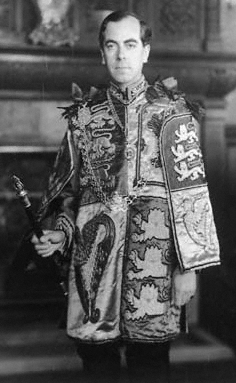
Sir Anthony Richard Wagner was a long-serving officer of arms at the College of Arms in London. He served as Garter Principal King of Arms before retiring to the post of Clarenceux King of Arms. He was one of the most prolific authors on the subjects of heraldry and genealogy of the 20th century.
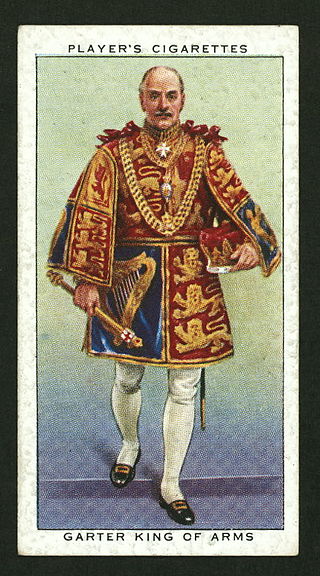
Sir Gerald Woods Wollaston was a long-serving officer of arms at the College of Arms in London. Wollaston's family had a firm tradition at the College of Arms. Wollaston's great-grandfather was Sir William Woods, Garter Principal King of Arms from 1838 until his death in 1842. His grandfather was Sir Albert William Woods who held the same post from 1869 to 1904.

Sir Algar Henry Stafford Howard was a senior British Army officer and long-serving officer of arms at the College of Arms in London. He served as the Garter Principal King of Arms from 1944 to 1950 before retiring. He was the third consecutive Fitzalan Pursuivant of Arms Extraordinary to attain the highest rank at the College of Arms.
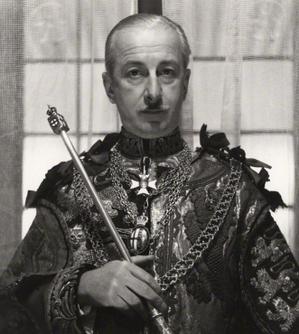
Sir George Rothe Bellew,, styled The Honourable after 1935, was a long-serving herald at the College of Arms in London. Educated at the University of Oxford, he was appointed Portcullis Pursuivant in 1922. Having been Somerset Herald for 24 years, he was promoted to the office of Garter Principal King of Arms in 1950, the highest heraldic office in England and Wales. He served in that capacity until his resignation in 1961. As Garter, Bellew oversaw the funeral of George VI, proclaimed the late King's daughter, Elizabeth II, as Queen and took a leading role in the organisation of her Coronation in 1953. After his retirement, Bellew was Secretary of the Order of the Garter and Knight Principal of the Imperial Society of Knights Bachelor. He lived for many years at Dower House in Old Windsor, Berkshire, but later moved to Farnham and died in 1993, aged 93.
Sir Charles Townley was a long-serving officer of arms at the College of Arms in London.
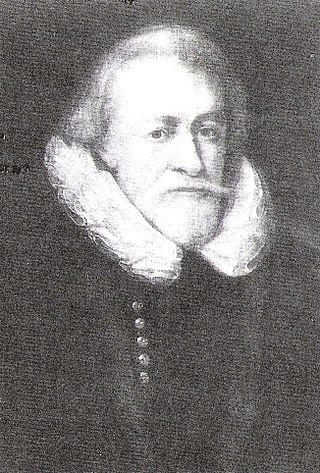
Sir William Dethick was a long-serving officer of arms at the College of Arms in London. He was the son of Sir Gilbert Dethick and followed his father as Garter Principal King of Arms. Though he was adjudged a qualified armorist and antiquarian, Dethick's biography is notable for numerous instances of conflict with his colleagues and others.
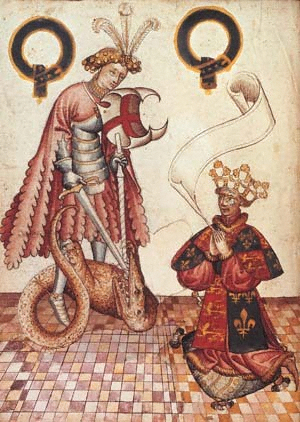
William Bruges was an English officer of arms. He is best remembered as the first person appointed to the post of Garter King of Arms, which is currently the highest heraldic office in England.
John Writhe was a long-serving English officer of arms. He was probably the son of William Writhe, who represented the borough of Cricklade in the Parliament of 1450–51, and is most remembered for being the first Garter King of Arms to preside over the College of Arms. Writhe is also notable for the contention that it was he who developed the system of heraldic cadency employed by English officers of arms to the present day.

Sir Thomas Wriothesley was a long serving officer of arms at the College of Arms in London. He was the son of Garter King of Arms, John Writhe, and he succeeded his father in this office.
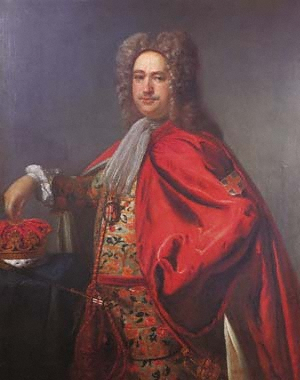
John Anstis was an English officer of arms, antiquarian and politician who sat in the House of Commons between 1702 and 1722. He rose to the highest heraldic office in England and became Garter King of Arms in 1718 after years of political manoeuvring.

Stephen Martin Leake was a numismatist and long-serving officer of arms at the College of Arms in London.
Sir Charles George Young (1795–1869) was an English officer of arms. He served in the heraldic office of Garter King of Arms, the senior member of the College of Arms in England, from 1842 until his death in 1869.

Sir George Nayler, KH FRS was a long-serving officer of arms at the College of Arms in London.
Sir Henry St George, the younger, was an English officer of arms. He was a younger son of the herald Henry St George (1581–1644).
Sir Henry St George (1581–1644) was an English Officer of arms. He was the third son of the herald Sir Richard St George and his wife Elizabeth St John.
Sir Thomas St George was an English officer of arms who rose to the rank of Garter Principal King of Arms (1686–1703).